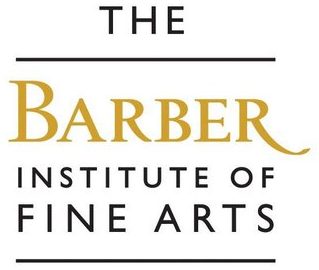Studio of Ugolino di Nerio
Saint Francis of Assisi
Siena, about 1320–35
Tempera on wood
88.2 x 32.2 cm
This is a left-side panel of a polyptych, an altarpiece made up of multiple panels and decorative frames. The central panel would have likely been Christ’s Crucifixion or the Virgin Mary on a throne.
Saint Francis of Assisi (1181-1226) is an important figure in Catholicism who founded the order of the Franciscans, a religious group still thriving today. Franciscans are known for their vows of poverty, chastity, and obedience to God. Birmingham’s Franciscan community exercise their faith in supporting asylum seekers.
Francis is identifiable in this panel by his brown habit (loose garment) and the stigmata (marks of Christ’s wounds in his hands, feet, and side). Francis received the stigmata after praying that he would share in Christ’s suffering on the cross.
For the greater part of its known history, this panel has been attributed to the Sienese painter, Ugolino di Nerio. It follows the Italo-Byzantine style. The elaborate use of gold, and the static, icon-like figure shows the influence of Byzantine tradition, while the soft, emotional expression in Francis’s face is more characteristically Italian.
In 1979, the attribution of this panel was brought into question by James Stubblebine, who considered it to be the work of the anonymous Clark Polyptych Master, whom he believes painted the polyptych in the Clark Art Institute, Williamstown, Massachusetts. While some believe the Clark Polyptych Master is a specific artist who trained under Ugolino, others argue it is simply a work by Ugolino at an early stage in his career.
Purchased 1943 (No.43.6)
Further reading:
Stubblebine, James H, Duccio di Buoninsegna and his School, Princeton, 1979, p. 157.
Everett, Fahy, ‘Review’, Apollo, 234, 1981, p. 130.
Castelli, Ciro, ‘The Construction of Wooden Supports of Late Medieval Altarpieces’, in Sassetta: The Borgo San Sepolcro Altarpiece, ed. Machtelt Israels, Leiden, 2009, pp. 319-37.
Gordon, Dillian, National Gallery Catalogues: The Italian Paintings Before 1400, London, 2011, p. 456.
Franco, Bradley R., ‘The Functions of Early Franciscan Art’, in The Medieval Franciscans, ed. Steven J. McMichael, Leiden, 2015, pp. 19-44.
Muller, Norman E., ‘The Sequential Assembly of Sienese Trecento Altarpieces’, in The Materials, Technology and Art of Conservation: Studies in honour of Larence Majewski on the occasion of his 80th birthday, February 10, 1999, ed. Rebecca Anne Rushfield and Mary W. Ballard, New York, 1999, pp. 104-33.

